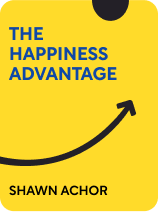

This article is an excerpt from the Shortform book guide to "The Happiness Advantage" by Shawn Achor. Shortform has the world's best summaries and analyses of books you should be reading.
Like this article? Sign up for a free trial here .
What is the Zorro Circle technique? How can it help you regain control over your life?
The Zorro Circle is the fifth happiness principle from The Happiness Advantage. This metaphor refers to the legend of Zorro, where a young swordsman achieved his heroic—and ambitious—dreams by separating them into small but manageable steps.
Here’s how you can apply the Zorro Circle technique to your own life.
How to Apply the Zorro Circle Technique
In order to succeed, you have to feel that you have some control over your fate—but control can seem elusive when you’re stressed and overwhelmed. Regain a feeling of control by tackling one small, manageable goal at a time.
There are two lenses through which you can interpret your control:
- People who have an internal locus of control believe that they can have a direct impact on their futures. When these people face a challenge or setback, they reflect on how they could have performed better, and then they improve for future situations.
- People who have an external locus of control blame events and circumstances on external forces, over which they have no control. This perspective leads to learned helplessness because if you don’t feel that you have any control, then it doesn’t matter what you do or don’t do—so, why bother? People with this view not only shirk the blame for failures, but they also deny credit for successes, which robs them of the feelings of confidence and commitment that come with achievement.
Feeling a sense of control is one of the biggest factors in both happiness and success. However, your sense of control can fly out the window when you feel overwhelmed. When you experience stress or fear, your emotional brain—which is responsible for survival reflexes like the fight-or-flight response—takes over. This emotional hijacking is problematic when the trigger is not life-threatening, but rather something more mundane, like a stressful project at work. Emotional hijacking impedes your decision-making, problem-solving, and communication skills, which makes it more difficult to tackle the task at hand and exacerbates stress and anxiety, creating a vicious cycle.
This is where the zorro circle comes in—and can help you achieve any goal you set your mind to. Essentially, this concept helps you to avoid being overwhelmed by splitting tasks into smaller steps. Here’s how the zorro circle works:
Regain Control Using the Zorro Circle
You can use the Zorro Circle technique—breaking up ambitions into small but manageable steps—in your own life.
When you’re on the verge or in the grip of an emotional hijacking, take an incremental approach to your problem. By tackling small, manageable goals, you not only make incremental progress, but you also gain confidence, knowledge, and resources along the way that help you continue your effort. For example, if you have a backlogged email inbox, start by responding only to new emails. Then, address emails from the day before, and then the day before that. Limit the time you allot to this project each day in order to break the large task into bite-sized chunks. This process helps to calm the emotional brain’s panic and instead tap into your problem-solving abilities.
The key is to start small. Follow these steps:
- Raise your self-awareness by acknowledging your emotions and articulating how you’re feeling, either by talking with someone or journaling. Research shows that the act of putting your feelings into words actually tames the power of negative emotions.
- Identify what you can control and what you can’t. Once you’ve verbalized what is causing you stress, make a list on a piece of paper or a spreadsheet of the aspects that you can affect and those that are beyond your control. Let go of your concerns about the things you can’t impact, and focus your energy on the areas you can control.
- Look at the list of things you can control, and create one small goal that you can accomplish right away. This small achievement won’t fix the whole problem, but it will give you a sense of accomplishment, control, and motivation to continue.
- Pick another small goal, and accomplish that. Repeat this process—progressively taking on larger tasks—until you’ve resolved the issue.

———End of Preview———
Like what you just read? Read the rest of the world's best book summary and analysis of Shawn Achor's "The Happiness Advantage" at Shortform .
Here's what you'll find in our full The Happiness Advantage summary :
- How happiness isn’t the result of success, it’s the cause of it
- The benefits of happiness—from increased creativity to improved health
- Strategies for adopting a positive mindset and raising your happiness baseline






